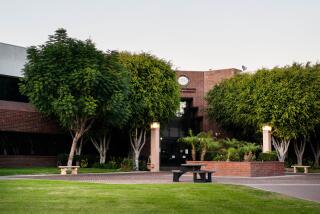A Guided Tour of King/Drew
- Share via
Martin Luther King Jr./Drew Medical Center was born out of some of the worst publicity this city has ever seen: the Watts riots. The tradition of ugly headlines has continued to dog the institution. The focus now is on reform of its physician training programs.
The hospital, however, has another heritage. It’s likely that there is not a person in Los Angeles who doesn’t benefit every day from this institution: A drug you take may have been developed here, a doctor binding your son’s battlefield wound may have been trained here, a person who passes you on the freeway may be driving safely because of successful treatment here.
King/Drew does have its problems. But then, so do other hospitals: Johns Hopkins Hospital may lose its accreditation in internal medicine in 2004. Yet everyone knows that Johns Hopkins Hospital is a good place to be a patient, a good place to practice medicine and a good place for research.
King/Drew is also all that. Let us, doctors at King/Drew, walk you through a few highlights:
* What truly sets a hospital apart as a health-care leader is its commitment to research. At King/Drew, $28 million in research grants will be awarded to our scientists by the end of this year. This places Drew University, which runs the teaching programs at King/Drew, well ahead of such institutions as Harbor-UCLA Medical Center and Washington University in St. Louis. With the relatively small size of the university’s faculty, per capita research funding is one of the highest in the country.
In the last two years, residents from the King/Drew department of medicine have presented more research abstracts at the Western Society of Clinical Investigation than any other program in the L.A. area. Our researchers are zeroing in on hormonal defects that may explain the grip heroin has on some patients. Our labs have identified an enzyme process that may be the key to the obesity dilemma. Five peer-reviewed scientific journals have senior editors based at Drew University.
* In the field of doctor education, our endocrinology fellowship program is considered the best in Southern California. We have more than 100 doctors applying for just two slots.
Similarly, our residency programs in ear, nose and throat; emergency medicine; ophthalmology; and oral, facial and maxillary surgery and our fellowship programs in geriatrics medicine and nephrology are highly competitive. It is true that our internal medicine residency program is on probation. Despite this, the program is still highly popular.
* The most important thing any hospital does is care for sick people. A victim admitted to the trauma bay at King/Drew will be in surgery within minutes, if necessary. Few trauma centers can match that. In fact, the Air Force Academy sends its trainees to King/Drew for an emergency medicine rotation.
The tiniest patients do well at King/Drew: Thirty-eight percent of the babies in our neonatology intensive-care unit are considered “very sick” versus 22% at both UCLA and Olive View-UCLA medical centers and 20% at Harbor-UCLA. Yet the survival rate of babies at King/Drew is comparable to that of the other institutions. That is a powerful statistical endorsement of the quality of care at King/Drew.
King/Drew is also a good place to be in another phase of life -- in 2000, U.S. News & World Report listed the geriatrics department in its “Best Hospital” ranking.
It’s time we move beyond our heritage of ugly headlines and get the city of Los Angeles excited about King/Drew’s heritage of community service and making this a better city. That is the real tradition of King/Drew.






